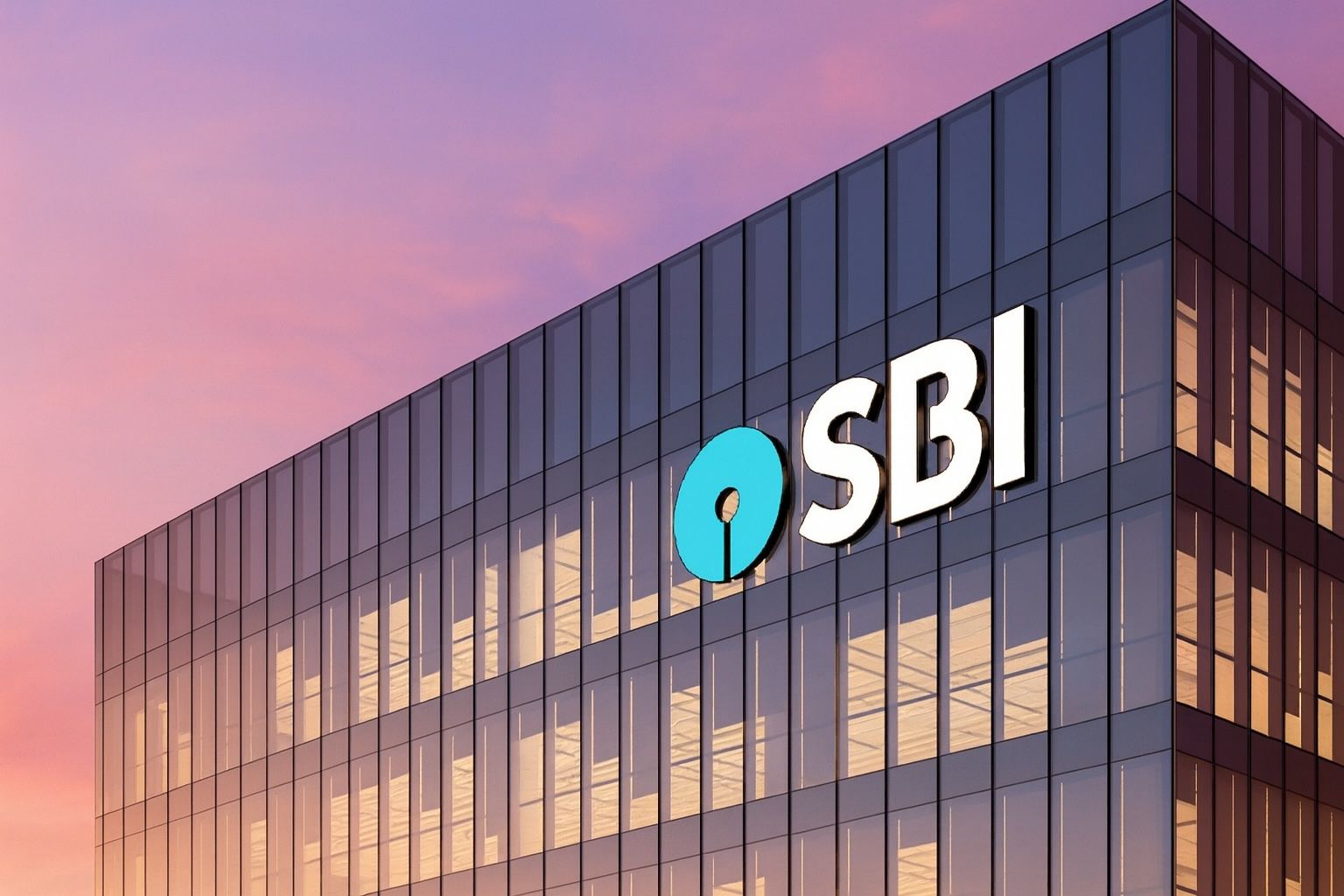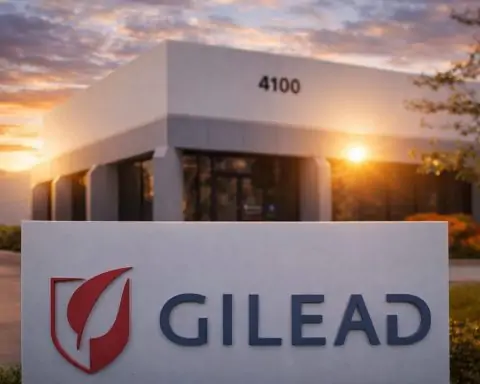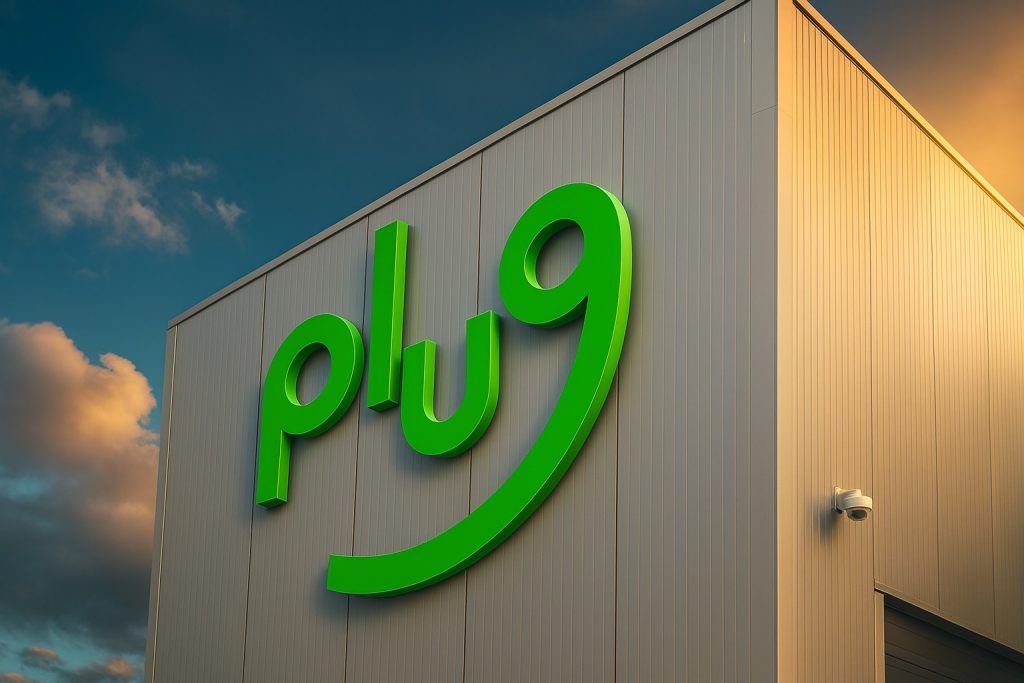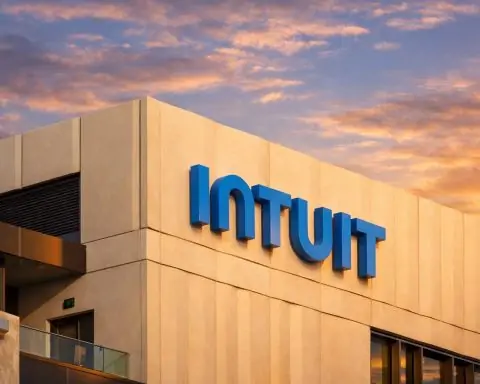- New High: State Bank of India (SBI) shares touched ₹913.65 intraday on October 20, 2025 – a fresh 52-week and all-time peak – before closing around ₹907 (about 2% higher for the day) [1] [2]. This capped a four-day winning streak and put the stock roughly 8–9% above its level a year ago [3].
- Market Value Milestone: At these levels, SBI’s market capitalization exceeds ₹8.3 lakh crore (₹8.37 trillion), or about $95 billion [4]. That firmly ranks SBI as India’s largest bank and among the six most-valued companies in the country [5]. The rally was accompanied by heavy trading volumes – about 13.5 million shares on Monday, well above the 20-day average [6] – signaling strong investor interest.
- Banking Sector Boost: SBI’s surge comes amid a broader rally in bank stocks. Strong Q2 results from peer lenders (notably Punjab National Bank’s earnings beat, which sent PNB’s stock up ~3.9%) lifted sentiment [7]. The Nifty PSU Bank index jumped 2.9% on Oct. 20 – its best day in four months – as investors bet that SBI will deliver similarly robust results in its upcoming earnings [8] [9].
- Positive Developments: Recent developments have bolstered SBI’s outlook. The bank raised about ₹8,889 crore by selling a portion of its stake in Yes Bank to Japan’s SMBC, boosting SBI’s capital buffers [10]. The sale – at ₹21.5 per share for a 13.2% stake – not only trimmed SBI’s holding in Yes Bank to ~10.8%, but also added an estimated 2–3% to SBI’s book value [11]. This strengthened capital position (aided by a ₹25,000 crore infusion via a share sale in July) gives SBI more ammunition for growth.
- Analyst Sentiment: Market experts are largely bullish on SBI. Citi recently re-initiated coverage with a “Buy” rating and a ₹1,050 price target [12] – implying around 15–20% upside and the potential for SBI’s stock to breach the ₹1,000 mark in coming months. CLSA has called SBI a “truly valuable” franchise that consistently outperforms peers [13], even suggesting the bank could approach a $100 billion valuation if momentum continues [14]. Domestic brokerages echo optimism: ICICI Securities tags SBI as a top pick, citing policy tailwinds like possible RBI rate cuts and recent tax reforms that could spur credit demand [15].
- Looking Ahead: The road ahead is being watched closely. SBI’s July–September quarter earnings (due in early November) will be a crucial catalyst [16] [17]. Analysts expect modest profit growth (around +2% year-on-year) [18], but any positive surprise – for example, stronger loan growth or better margins – could propel the stock higher and put the psychologically significant ₹1,000 level within reach. Most brokerage 12-month forecasts for SBI now sit in the ₹1,000–1,100 range [19]. Conversely, if results disappoint or if credit margins come under pressure, some short-term pullback is possible given the stock’s recent run-up. Overall, SBI is riding high on improving fundamentals, though maintaining that momentum will depend on both the bank’s execution and the broader economic climate in the coming months.
Recent Stock Performance
State Bank of India’s headquarters in Mumbai. SBI’s stock has been on a tear in recent days, climbing for four straight sessions through Oct. 20. It hit an intraday high of ₹913.65 on Monday – a record level – before settling back to ₹907.5 at the close [20]. This roughly 2% single-day jump helped lift the Nifty 50 and Sensex indexes to one-year highs as well, underlining SBI’s influence as a banking bellwether [21] [22]. In the past week alone, the stock is up nearly 3%, and it now sits about one-third higher than its 52-week low from earlier in the year [23].
The recent rally solidifies State Bank of India’s position as the country’s most valuable lender. At current prices, SBI’s market capitalization is approximately ₹8.3 trillion (around $95 billion) [24]. This feat places it among a handful of elite Indian companies to ever cross the ₹8 trillion mark [25]. In practical terms, SBI now ranks in the top tier of Indian corporates by value – an impressive status underscoring investor confidence in the bank’s prospects. Notably, trading activity in SBI has been robust during the upswing: on October 20, over 1.35 crore (13.5 million) SBI shares changed hands across the NSE and BSE, significantly above the typical daily volume [26] [27]. Such heavy volumes alongside price gains suggest active buying interest, as both institutional and retail investors rush to increase exposure to India’s banking giant.
Technical analysts point out that SBI’s push above the ₹890–900 resistance zone is a bullish signal. The stock’s breakout past ₹900 is seen as a decisive move that could pave the way for further upside in the near term [28]. Chart watchers have flagged ₹920 as the next hurdle – a level the stock nearly reached intraday [29]. If SBI can sustain prices above ₹900, momentum indicators remain positive for an extended rally [30]. On the downside, traders see support around ₹875 (with a stronger floor roughly at ₹860) in case of any pullback [31] [32]. In short, the technical setup suggests SBI is in a confirmed uptrend, though some consolidation after the sharp gains wouldn’t be surprising.
What’s Driving the Rally?
Several converging factors explain why SBI’s stock has shot up to new highs:
- Stronger Bank Earnings: A key trigger has been better-than-expected results from India’s banking sector this quarter. Over the past weekend, multiple banks – especially public-sector lenders – posted robust earnings that beat street forecasts, boosting confidence across the board [33]. In particular, Punjab National Bank (PNB) surprised investors with solid profit growth, sending its shares almost 4% higher on Monday [34]. This fueled a rally in the PSU Bank index, which leapt 2.9% for its best single-day gain since June [35]. As India’s largest bank, SBI benefited from the optimism – essentially riding the positive wave. “SBI, India’s largest lender, rode the optimism to a 2.1% gain” after PNB’s results, Reuters noted [36]. The logic: if peers are doing well, chances are SBI will also deliver strong numbers, so investors piled in ahead of its earnings. Even top private banks have impressed recently; market leader HDFC Bank hit a record high last week after reporting steady growth and improved asset quality [37]. Fears that high interest rates would hurt loan demand or margins are easing, as bank profits are holding up better than anticipated.
- Corporate Actions Boosting Confidence: SBI-specific developments have added fuel to the rally. Notably, SBI completed the sale of a part of its stake in Yes Bank to Japan’s Sumitomo Mitsui Banking Corp (SMBC) in late September, netting roughly ₹8,889 crore in proceeds [38]. SBI had originally acquired this stake as part of a rescue for Yes Bank; by trimming it from ~24% down to about 10.8%, SBI not only booked a profit but also freed up capital. The sale, at ₹21.5 per share, is estimated to have added around 2–3% to SBI’s book value [39]. “The latest stake sale adds 2–3% to SBI’s book value, boosting valuations,” India Today reported, underscoring how it strengthened the bank’s balance sheet [40]. Investors cheered this move as a sign of prudent capital management by SBI. In fact, the bank’s market cap decisively climbed back above ₹8 trillion after the deal [41]. The capital raise complements an earlier ₹25,000 crore infusion (via a share offering) in July 2025 that shored up SBI’s equity base [42]. With a fortified capital position, SBI is well-placed to meet credit demand and regulatory requirements, giving shareholders confidence that growth can be funded without straining the bank’s finances.
- Government & Policy Tailwinds: The macroeconomic backdrop has also turned favorable for banks. The Indian government unveiled tax relief measures at the end of September – including cuts in certain corporate taxes – which helped spark a rally in banking and automobile stocks [43]. Easing tax burdens can boost corporate profitability and loan demand, which is positive for lenders like SBI. On the monetary front, the Reserve Bank of India (RBI) has adopted a supportive stance. The central bank cut its benchmark repo rate multiple times earlier in 2025, totaling a full 100 basis points of rate reductions, bringing the repo rate down to 5.50% [44]. While rate cuts can squeeze banks’ net interest margins in the short run, they also stimulate borrowing and economic activity – a trade-off that can ultimately benefit big banks. Moreover, the RBI recently reduced banks’ Cash Reserve Ratio (CRR) (the mandatory reserves kept with the RBI) to inject liquidity into the banking system [45]. This move immediately frees up funds for banks like SBI to lend. Given SBI’s massive deposit base, even a small cut in CRR unlocks thousands of crores that can be used for loans or investments. Analysts at ICICI Securities highlighted “the positive impact of the recent CRR cut” along with upcoming likely rate cuts, GST reforms, and festive-season credit demand, as reasons for making SBI a top pick in the sector [46]. In short, policy decisions – from tax cuts to RBI’s easy money stance – have created a more hospitable environment for banking profits.
- Improving Sentiment and Foreign Flows: Until a few weeks ago, Indian equities had been under pressure due to global factors – from rising oil prices to worries about U.S. interest rate hikes and international trade tensions. In fact, Indian markets in mid-October were lagging behind other markets amid foreign investor outflows and global jitters [47]. But those clouds have started to part. Recent data showed inflation moderating and India’s growth staying resilient, which, combined with the government’s reforms, has helped restore optimism. “Domestic markets will reverse their underperformance over global peers as optimism is gradually returning, and the stage is set for recovery as valuations are reasonable and earnings downgrades have bottomed out,” said Amisha Vora, Chairperson of PL Capital, commenting on the market turnaround [48]. Importantly, global perceptions of India have improved – S&P Global Ratings upgraded India’s sovereign credit rating in August, the first such upgrade in 18 years, citing strong growth and improved monetary policy [49] [50]. That upgrade signaled to many investors that India is on a solid footing. After months of withdrawals, foreign institutional investors (FIIs) are trickling back into Indian stocks, drawn by relatively attractive valuations and India’s growth story [51] [52]. HSBC Global Research noted that Indian equities had underperformed other emerging markets through 2024, making this a “favourable time” for global investors to re-enter [53]. When foreign inflows return, heavyweight stocks like SBI tend to benefit disproportionately, as they are common targets for overseas portfolios. Indeed, SBI’s American Depositary Receipts (ADRs) traded in the US have also been climbing, mirroring the domestic rally [54]. All these factors – robust earnings, a successful stake sale, supportive policy moves, and reviving investor appetite – have coalesced to drive SBI’s stock upward. The market is effectively “pricing in” a scenario that India’s largest bank will continue to post healthy growth and maintain asset quality in the coming quarters [55]. With the festive season underway (a period when credit demand for home, auto and personal loans typically picks up), SBI could see a further business boost. Even regulatory changes that once caused concern are being taken in stride; SBI’s chairman recently stated that new RBI rules on expected credit-loss provisioning won’t significantly impact banks, thanks to a long transition period allowed for compliance [56]. In sum, a confluence of positive developments – internal and external – is fueling SBI’s current rally.
Analyst Views: Bulls vs. Bears
Market analysts and commentators are abuzz about SBI’s steep ascent, and their commentary spans the spectrum from highly optimistic to cautiously watchful. Here’s a look at what the bulls and bears are saying:
Bullish Case – “All Aboard SBI”: By and large, brokerage houses are upbeat about SBI’s prospects. Global investment bank Citi has thrown its weight behind the stock, re-launching coverage with a “Buy” rating and a ₹1,050 target price [57]. That target implies over 15% upside from current levels, suggesting SBI shares could pierce the ₹1,000 mark in the not-too-distant future. Citi has even dubbed SBI its “preferred pick” among India’s public-sector banks, citing multiple growth drivers. These include improving retail loan growth – SBI has seen strong traction in personal loans (especially through its digital “Xpress Credit” program) and a renewed push into home loans – as well as a robust pipeline of corporate loans [58]. Crucially, Citi argues SBI is managing to keep its deposit costs low (thanks to its enormous low-cost CASA deposit base), which helps protect its net interest margin (NIM) [59]. In fact, Citi’s analysts project that SBI will navigate the industry-wide margin pressures better than most, expecting the bank to maintain NIMs around 2.8–2.9% over FY2026–27 [60]. They also forecast SBI’s loan book will expand by roughly 13–14% annually in that period – a healthy clip in line with or above nominal GDP growth [61]. If those predictions hold, SBI’s earnings should rise accordingly. Citi sees SBI sustaining a Return on Assets around 1.0% and Return on Equity in the 14–15% range over the next two years [62] – which would mark some of the strongest profitability metrics in the bank’s recent history. Such performance, in Citi’s view, justifies their bullish price target and then some.
Other respected analysts echo this optimism. Brokerage CLSA recently lauded SBI as a “truly valuable” franchise that has consistently outperformed its peers [63]. They note that despite its rally, SBI’s valuation hasn’t run wildly ahead of its fundamentals – implying the stock’s rise is grounded in real improvements, not just hype [64]. CLSA was impressed by SBI’s solid loan growth and improvements in asset quality, and suggested that if trends hold, SBI could even breach the $100 billion market cap milestone within a year [65]. Such a feat would put SBI in an elite global club of banks and underline India’s banking sector strength.
Domestic analysts are also upbeat. As mentioned, ICICI Securities has SBI as a top pick in the sector, citing macro catalysts that could further benefit the bank [66]. They point out that if the RBI enacts additional rate cuts in coming months (as inflation permits) and if the government continues with pro-growth reforms (like tweaks to GST or potential bank-friendly measures in the next Budget), it could spur consumption and credit demand – trends from which SBI is poised to profit [67]. Moreover, the ongoing festive season (Q3 of the fiscal year) is typically strong for retail loan growth, and early indicators show a pickup in borrowing for home, auto and consumer purchases. Analysts believe this seasonal tailwind will reflect positively in SBI’s performance for the second half of the year [68]. Even SBI’s subsidiaries (in insurance, mutual funds, credit cards, etc.) add to the bullish case – they contribute significantly to the group’s value, and any future steps to list or monetize these arms could unlock further upside for shareholders.
Cautious Take – “Priced for Perfection?”: While the consensus leans bullish, some experts urge a degree of caution. After such a sharp rally, SBI’s valuation is no longer the bargain it once was – the stock trades around 1.7 times its book value, which is on the higher side of its 5-year range (though still cheaper than private bank peers) [69]. As Amit Jain of Ashika Global noted, parts of the market (especially mid-cap stocks) had gotten “stretched” in valuation in recent months, and even quality names could see bouts of profit-taking if expectations get too euphoric [70]. In SBI’s case, the stock is near all-time highs and assumes a lot of good news is ahead; any slip-ups could lead to a swift pullback. Analysts at SBI’s own brokerage arm have reportedly commented that the broader market might remain in consolidation until there is “clear evidence” of an earnings rebound, cautioning that “only a clear break above key technical levels would revive sustained bullishness” [71]. Those technical levels have now been surpassed for SBI and the indexes, but the point is that sustained gains need fundamental validation. In other words, the upcoming earnings reports (for SBI and other majors) need to confirm the growth story that investors are banking on.
The most commonly cited risk factors are margin pressure and asset quality. The RBI’s 100 basis points of rate cuts this year, while growth-friendly, have narrowed banks’ lending spreads [72]. If deposit rates start creeping up (as competition for funds increases) or if lending rates drop further, banks could see NIMs compress more than expected. Citi, even in its bullish note, explicitly flagged “lower-than-expected NIMs or asset quality deterioration” as key risks to their thesis [73]. Essentially, if SBI’s interest margins shrink or if it encounters higher bad loans, its return ratios would suffer, capping the stock’s upside [74]. How likely is that? For now, SBI’s asset quality is at its best in decades – as of June 2025, gross non-performing assets were just 1.83% of loans and net NPA a mere 0.47%, the lowest levels in 15 years [75]. Credit costs (provisions for loan losses) have been minimal thanks to years of cleanup and an economic upcycle. However, some sector observers have noted a slight uptick in delinquencies in unsecured retail loans industry-wide (personal loans, credit cards, etc.), which bear watching [76]. SBI has stated that its credit costs remain under control and that it is comfortable with its lending portfolio’s quality [77]. Still, in a country as large as India, with an uncertain global environment, there’s always potential for external shocks. A spike in global oil prices, a geopolitical flare-up, or a hawkish surprise from the U.S. Federal Reserve could quickly sour the mood for emerging market banks [78]. Such events might trigger foreign investors to pull back, which in turn would pressure stocks like SBI that have benefited from recent inflows [79]. One market strategist put it succinctly: the rally in SBI has been “remarkably bullish,” but given global uncertainties, investors should keep “one eye on the exit” even as they enjoy the ride [80]. It’s a reminder that prudent investors remain vigilant, acknowledging that even the strongest bull cases need to be constantly re-evaluated against real-world developments.
In summary, the bulls argue that SBI’s strong fundamentals, market leadership, and India’s improving economic story justify the optimism – with some predicting the stock’s current surge is just a pit stop on the way to ₹1,000+ levels. The bears (or cautious camp) counter that a lot of good news is already priced in, and that the true test lies in the bank’s upcoming results and its ability to maintain performance in a lower-interest-rate regime [81] [82]. For now, the bullish narrative clearly has the upper hand, but all eyes are on November’s earnings to either validate the optimism or serve as a reality check.
Forecast and Outlook
How SBI’s stock performs from here will depend largely on its financial results and management commentary in the coming weeks. The bank is scheduled to announce its Q2 FY2026 earnings in the first week of November, and that event is being seen as the next major inflection point [83] [84]. Market estimates suggest SBI will report only a modest rise in profit for the July–September quarter – on the order of ~2% year-on-year growth, which would put net profit slightly above ₹20,000 crore [85]. Revenue is forecast to grow around 7–8% in the same period [86]. These tempered expectations reflect assumptions of a minor squeeze on NIM (due to the earlier rate cuts) and somewhat higher operating expenses. Should SBI manage to beat these predictions – say, by delivering stronger loan growth, better fee income, or lower provisions – it would reinforce the bull case and likely give the stock another leg up. In fact, a positive surprise of sufficient magnitude could bring the ₹1,000 share price within striking distance, perhaps as early as this year. On the flip side, if results disappoint (for example, if profits actually decline or if management guides toward weaker margins ahead), SBI’s stock might see a bout of profit-booking. Given the recent run-up, even committed investors might trim holdings on any signs that the earnings trajectory is wobbling.
Looking further ahead, the general outlook on SBI remains optimistic, though expectations are more moderate after the latest surge. Many reputable brokerages have 12-month price targets in the ₹1,000–1,100 range, which implies roughly 15–20% upside from current levels [87]. To achieve that, SBI will need to execute on a few key fronts. Firstly, loan growth should ideally stay in the double digits (the bank’s management has guided for mid-teen credit growth and is counting on rising consumption and government infrastructure spending to drive loan demand) [88]. Secondly, SBI must maintain its asset quality gains – with bad loans at multi-year lows, the bank has a clean slate, and keeping new defaults in check will be critical to hitting profit targets. Thirdly, net interest margins need to hold reasonably steady; a gradual decline is expected due to past rate cuts, but if SBI can manage its deposit costs well (leveraging its cheap CASA deposits) and improve lending yields in certain segments, it can protect its margins better than peers. The bank’s vast scale can also aid efficiency: SBI’s size gives it pricing power and a low-cost funding advantage that most competitors can’t match.
Market conditions will play a big role as well. If India’s GDP continues to expand around 6%+ annually and inflation remains under control (as current projections assume), it creates a “Goldilocks” scenario for banks – solid economic growth with no need for RBI to hike rates aggressively [89] [90]. In such a case, credit demand would likely stay robust and defaults low. Some analysts even speculate that the RBI could cut rates further in 2026 if inflation stays benign [91]. While additional rate cuts might initially pinch banks’ margins, they could significantly boost loan growth and improve borrowers’ ability to repay (by lowering interest costs), which is ultimately a positive for lenders like SBI. On the global front, there is a growing expectation that the U.S. Federal Reserve may start easing its policy by 2026 if the U.S. economy slows – a scenario that would be welcomed by emerging markets. Already, traders are betting that Fed rate cuts are on the horizon [92], which could weaken the dollar and draw more foreign capital into markets like India. If global liquidity improves and risk appetite returns, India’s financial stocks stand to gain.
Valuation-wise, SBI’s stock – even near record highs – is not in bubble territory when compared to peers. Its current price-to-book ratio around 1.7× and price-to-earnings around 10–11× are higher than those of other PSU banks, but still considerably lower than marquee private banks (which often trade at 2.5–3.5× book and well above 15× earnings) [93]. This relative discount is partly due to the market’s lingering perception of public-sector banks as riskier or less efficient. However, SBI’s consistent performance is challenging that stereotype. Should SBI prove that it can sustain ~15% ROE and ~1%+ ROA in coming years – levels it is on track to achieve – there is room for its valuation multiples to creep up further, narrowing the gap with private peers. Some global investors view SBI as a unique mix of value and growth: it offers the stability and dividend of a value stock (SBI’s dividend yield is around 1.7% [94]), yet it also has growth levers through its core banking operations and subsidiaries. Any steps to monetize its stakes in businesses like SBI Mutual Fund, SBI Life Insurance, or SBI Cards (for example via listings or stake sales) could unlock significant value that isn’t fully reflected in the current share price.
That said, it’s worth remembering that SBI’s sheer size means it is effectively a proxy for the Indian economy. If India’s economic momentum slows or if unforeseen shocks hit the system, SBI will feel the effects. Additionally, SBI remains a government-majority owned institution (~55% ownership by the government), so it sometimes has to balance profit objectives with public policy goals. For instance, in periods of stress, public sector banks are often called upon to support lending to agriculture or small businesses or to participate in economic relief efforts – initiatives that can be noble but may dent profitability. So far, there are no major indications of such concerns on the horizon, but it’s a factor long-term investors keep in mind.
Bottom line: State Bank of India’s stock has enjoyed a stellar run, buoyed by a confluence of encouraging factors from strong earnings in the sector to supportive policies and renewed investor confidence. The bank’s fundamentals are arguably the strongest they’ve been in years, and most analysts remain firmly in the bullish camp – many eye that ₹1000 milestone as the next target [95]. As we move forward, the focus will shift to execution: SBI’s upcoming quarterly results and how well management delivers on growth and asset quality promises. If the numbers confirm the optimism, the current rally could well have more legs. But if there’s one lesson seasoned investors heed, it’s that expectations must eventually meet reality. In the coming weeks, SBI will have the opportunity to prove that its market valuation is justified by its performance. Until then, sentiment is clearly in its favor. As one market expert advised, even as the bulls run, “patience is key” – meaning investors should stay grounded and watch the data closely – because sustained bullishness will ultimately need confirmation from the bank’s actual results and the macro environment [96]. For now, SBI’s trajectory looks positive, making it a standout in India’s market landscape as 2025 draws to a close.
Sources: Recent market reports and expert analyses from Reuters, Moneycontrol, India Today, Economic Times and TS2.tech have been used in compiling this article [97] [98] [99] [100], ensuring an up-to-date and balanced view of SBI’s stock trajectory.
References
1. www.indmoney.com, 2. ts2.tech, 3. ts2.tech, 4. ts2.tech, 5. ts2.tech, 6. ts2.tech, 7. ts2.tech, 8. ts2.tech, 9. ts2.tech, 10. ts2.tech, 11. ts2.tech, 12. ts2.tech, 13. ts2.tech, 14. ts2.tech, 15. ts2.tech, 16. ts2.tech, 17. ts2.tech, 18. ts2.tech, 19. ts2.tech, 20. www.indmoney.com, 21. ts2.tech, 22. ts2.tech, 23. www.indmoney.com, 24. ts2.tech, 25. ts2.tech, 26. ts2.tech, 27. ts2.tech, 28. ts2.tech, 29. ts2.tech, 30. ts2.tech, 31. ts2.tech, 32. ts2.tech, 33. ts2.tech, 34. ts2.tech, 35. ts2.tech, 36. ts2.tech, 37. ts2.tech, 38. ts2.tech, 39. ts2.tech, 40. ts2.tech, 41. ts2.tech, 42. ts2.tech, 43. ts2.tech, 44. ts2.tech, 45. ts2.tech, 46. ts2.tech, 47. ts2.tech, 48. ts2.tech, 49. www.reuters.com, 50. www.reuters.com, 51. ts2.tech, 52. ts2.tech, 53. ts2.tech, 54. ts2.tech, 55. ts2.tech, 56. ts2.tech, 57. ts2.tech, 58. ts2.tech, 59. ts2.tech, 60. ts2.tech, 61. ts2.tech, 62. ts2.tech, 63. ts2.tech, 64. ts2.tech, 65. ts2.tech, 66. ts2.tech, 67. ts2.tech, 68. ts2.tech, 69. ts2.tech, 70. ts2.tech, 71. ts2.tech, 72. ts2.tech, 73. ts2.tech, 74. ts2.tech, 75. ts2.tech, 76. ts2.tech, 77. ts2.tech, 78. ts2.tech, 79. ts2.tech, 80. ts2.tech, 81. ts2.tech, 82. ts2.tech, 83. ts2.tech, 84. ts2.tech, 85. ts2.tech, 86. ts2.tech, 87. ts2.tech, 88. ts2.tech, 89. www.reuters.com, 90. www.reuters.com, 91. ts2.tech, 92. ts2.tech, 93. ts2.tech, 94. ts2.tech, 95. ts2.tech, 96. ts2.tech, 97. ts2.tech, 98. ts2.tech, 99. ts2.tech, 100. ts2.tech









